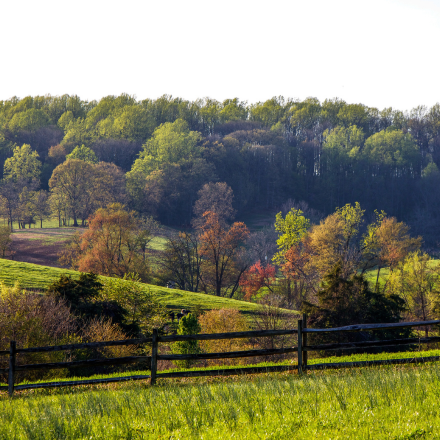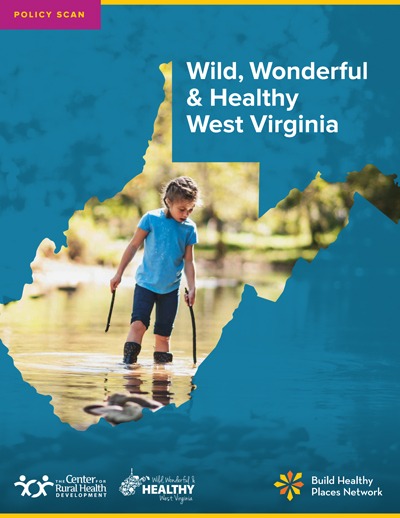Supporting Health, Equity and Economic Vitality in West Virginia
Program
Highlights

PHI’s Build Healthy Places Network (BHPN) is improving the health of West Virginians and strengthening the state’s healthcare delivery system by supporting the Wild, Wonderful and Healthy West Virginia initiative—engaging participants, developing tools and resources and fostering connections with new sectors to advance racial equity, deepen investments and align resources that advance place-based health.
90% of participants stated their awareness of approaches to operationalize multi-sector partnerships increased
80% of participants stated their comfort with community-led engagement processes increased
75% of participants stated their familiarity with health equity frameworks was greater
90% of participants believed they had increased access to tools and resources for supporting joint healthcare and community development engagement and addressing the social determinants of health
75% of participants stated they had increased awareness of local policies to advance healthy and economically vibrant communities
West Virginia is located in the heart of the Appalachian Mountains, a largely rural area with few densely populated communities. Due to its rural nature and geographical challenges, including transportation barriers, West Virginia community members struggle to access healthcare, social and educational services—resulting in stark health disparities that negatively impact the health, vitality and economic potential of individuals and broader communities.
Based on data from a 2020 Appalachian Regional Commission report, West Virginia’s years of potential life lost rate (a measure of premature mortality) was 47% higher than the national rate. The injury mortality rate there was 70% higher than the national rate. Mortality due to diabetes, heart disease, stroke and cancer in West Virginia also exceeded the national rates.
The Wild, Wonderful and Healthy West Virginia initiative (WWHWV), led by the Center for Rural Health Development, aims to improve the health of West Virginians and strengthen West Virginia’s healthcare delivery system. PHI’s Build Healthy Places Network (BHPN) supported the initiative by engaging participants, developing tools and resources for key stakeholders, and fostering connections with new sectors to improve health, equity and economic vitality in West Virginia communities.
Civic engagement and building community trust are critical to understanding the priorities, vision, and needs of diverse community stakeholders. BHPN aimed to ensure the inclusion of all community groups, in particular those that have been historically excluded due to race, ethnicity or other socio-economic status. They proactively reached out to people of color through churches, faith-based organizations and other social networks to build trust, engage and learn, and create a sustained ecosystem for inclusion—facilitating community members to act as experts in defining their own challenges and crafting solutions.

Center[ing] the voices of those who have been historically excluded due to race, ethnicity or other socio-economic status is vital. Reframing assumptions about racial homogeneity is crucial to create healthy places where everyone can thrive.Build Healthy Places Network
Over the course of this initiative, BHPN contributed to helping participants increase their awareness of strategies for successful multi-sector partnerships, increase their comfort level with community-led engagement processes and their familiarity with health equity frameworks. Additionally, participants learned about the social determinants of health and how to address them through cross-sector partnerships and they increased their understanding of policies to advance healthy and economically vibrant communities. These outcomes were achieved by the following:
Centering Community Voices
BHPN designed and implemented specific strategies to center community voices and engage residents as leading partners. BHPN created a case-making tool for governmental planning organizations or key decision makers on the importance of centering community voices in defining problems and crafting solutions for cross-sector partnerships and to advance health equity. BHPN also developed and facilitated a session with WWHWV participants on the Spectrum of Community Engagement to Ownership to assess where participants are on the continuum and strategies to move toward community-led solutions.
Tools, Resources and Support for Participants
BHPN also developed resources and tools on community engagement, health and wellbeing, upstream interventions, prevention-focused local health improvement efforts and the value of multisector approaches for rural health through community development and healthcare partnerships, including the Wild, Wonderful & Healthy West Virginia Policy Scan. BHPN support focused on: expanding opportunities for partners to leverage the community health needs assessment process to address vital conditions of health, strengthening data capacity to ensure equitable and data-driven strategic planning for coalitions, engaging new sectors to deepen investments and aligning resources that advance place-based health.

Learn More: Explore the Wild, Wonderful & Healthy West Virginia Policy Scan
The WWHWV policy scan, developed by BHPN, is an actionable guide that emphasizes the importance of centering community voices in defining problems and crafting policy solutions that advance the Seven Vital Conditions for Community Health and Well-Being. The scan is intended to support the efforts of West Virginia communities as they work through multisector collaborations to advance the health of residents by designing programs and policies that improve rural prosperity and equity. The guide’s set of policy examples prioritizes building a shared future and creating equitable rural communities where all people and communities are treated fairly, regardless of their race or socioeconomic background.
Expanding Opportunities and Partnerships
To support WWHWV’s efforts to engage new partners across sectors including community development, BHPN conducted the Community Development Landscape Analysis of West Virginia. This tool identifies potential local, regional and national community development financial institutions, community development corporations and other community development finance partners as well as aligned initiatives, priorities, and funding streams already present in the state. BHPN also developed a readiness assessment tool that can be used by community groups that may be considering joining WWHWV.
Findings from Participant Surveys
Pre-and post-survey findings from 150 participants involved in the WWHWV initiative, showed an increase in knowledge, attitude and skills:
- 90% of participants stated their awareness of approaches to operationalize multi-sector partnerships increased;
- 80% of participants stated their comfort with community-led engagement processes increased;
- 75% of participants stated their familiarity with health equity frameworks was greater;
- 90% of participants believed they had increased access to tools and resources for supporting joint healthcare and community development engagement and addressing the social determinants of health; and
- 75% of participants stated they had increased awareness of local policies to advance healthy and economically vibrant communities.
Work With Us
You change the world. We do the rest. Explore fiscal sponsorship at PHI.
Support Us
Together, we can accelerate our response to public health’s most critical issues.
Find Employment
Begin your career at the Public Health Institute.
